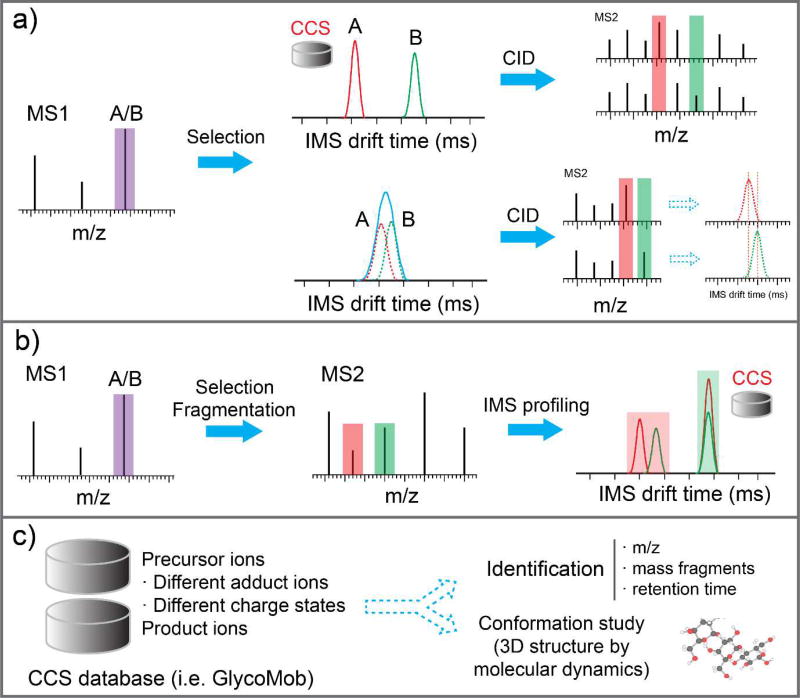Figure 3.
IM-MS analysis of precursor ions and their fragments. a) Two scenarios exist for co-eluted isomers A/B for IM-MS analysis after being selected by quadrupole. Scenario one: A and B could be baseline-separated by IM. The mobility-selected ions could be subject to CID separately and signature product ions could be obtained for each †isomer. Scenario two: A and B could not be completely resolved by IM. Signature product ions were obtained for unresolved species. Drift time profiles of these signature products ions were extracted from total drift time profiles to differentiate A and B. b) Co-eluted isomers A/B were selected by quadrupole for MS/MS and the drift time profiles could be obtained for all product ions. Those product ions that are indicative of the isomeric structures of the analyte could be distinguished by IM and be used to differentiate the isomers. c) The CCS of both precursor ions and product ions could be measured and implemented into a CCS database. The CCS values could be used as an additional parameter for glycan identification besides the commonly used m/z, mass fragments, and retention time. Furthermore, conformational study could be conducted by molecular dynamics to acquire the 3D structures of glycans.

